Kite2
Kite2 a spot gear consisting of a light framework upon which paper, silk or other light thin material is stretched, usually in the shape of an isosceles triangle with a circular arc as base and having a tail or balance, flown in the wind at the end of a long string. Kites having one plane surface require flexible tails for lateral and directional stability. Kites may also be designed to support a person in the air or to form a part of an unpowered aircraft. It is thought that the first use of kites to secure meteorological information was made in Scotland by Alexander Wilson, who in 1749, used them to carry thermometers aloft.
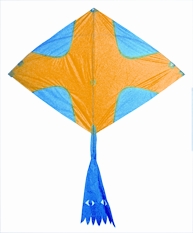 |
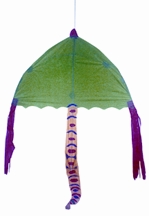 |
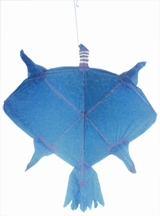 |
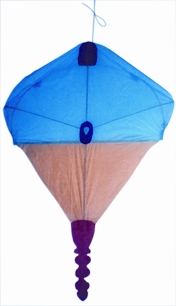 |
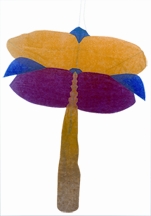 |
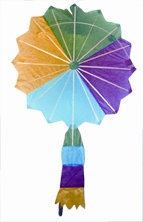 |
In 1752, Benjamin Franklin used kites to study lightning. The box kite was invented in 1893 by Lawrence Hargrave, an Australian, and was used effectively in meteorological and aerodynamic studies. The tetrahedral kite was used by Alexander Graham Bell for making experiments on problems of airplane construction.
Kite making has been popular in China, Japan and other East Asian countries for centuries and kite flying has become a popular sport for entertainment as well as for organised competitions. Men and women of different ages, especially the younger people enjoy flying kites and the game often take the form of festivals in many Asian countries including Bangladesh during the winter and the second half of summer. Large size kites are kept flying for days in the sky.
Kite flying was one of the many different forms of entertainment of the elite people of Dhaka in the Mughal period. According to some sources, kite flying became a festive tradition during the period of Nayeb-e-Nazim Nawajesh Mohammad Khan in the 1740s. Kites started to have been made in commercial scale and seen in the sky flying from rooftops or the open grounds and fields. There are some kite making shops in Dhaka even today. The village people in many parts of the country organise kite flying competitions on the eve of religious festivals. People compete in demonstrating control on piloting the kites by squeezing or releasing the ropes/strings and maneuvering them with the strength or direction of wind. Simpler things like, how high a kite flies or how beautiful is its decoration, are also subject of competition. But the most entertaining is the maneuvering, that cuts the strings of the competitors' kites to finally reveal the last survivor as the champion. Historical accounts record such competitions among the teams of kite fliers sponsored by elite people in the 18th and 19th centuries.
The art of kite making requires a good working knowledge of geometry and specialised skill in designing and making the different components such as the khil (stretched bolt), pati (tuck), and latai (spool). Unless made with proper measures in weight and size, the kite does not fly or after reaching some height it starts rotating in uncontrolled directions. The kites are generally of two types, the first are those connected to ground with string/thread and the second are those let to fly free. Some of the kites of the first group are the guddi, dhaush, chong and chonga and those of the other group are fanush, balloon, hauwee, aeroplane and rocket. Among the various types, guddi is the simplest and most popular. This kite is usually square in shape, although some may be rectangular or rhombus. A variation of this type of kite is the snake kite, which has a long tail and the square/rectangular mainframe at the upper end and looks like the serpent. Kites may be prepared in the shape of fishes or butterflies, too.
Dhaush, as the word itself means, is a large oval sized kite and when it flies in the sky, it looks like the bird of prey of the same name. One of the large types of kites is the aeroplane kite, which is of the shape of a mini aircraft flying high in the sky with its body tied to the ground by a strong string or rope. Another dhaush kite is the dhop, which is three-dimensional and flies like a jet plane. The chong kite is usually of the shape of a trapezium with the upper two sides larger than the lower ones by 9 to 18 cm. Some chong kites are made to look like a man and they fly in the sky at night with torches in their hands hanging on both sides of the kite's main frame. One of the very beautiful among the 'cordless' kites is the fanush, which is in fact, a large balloon with flat open 'mouth' at its bottom part and whose body is made of light paper with stretched bolts at proper places. Cotton or rags are wrapped around the main bolt and the kite flies free when fueled by fire lit in the wrapper. Fanush is said to be the predecessor of flying balloons and in a sense, the kites as a whole had once taught men to practice aerodynamics, which later, contributed to development of aircraft. [Sadat Ullah Khan]
